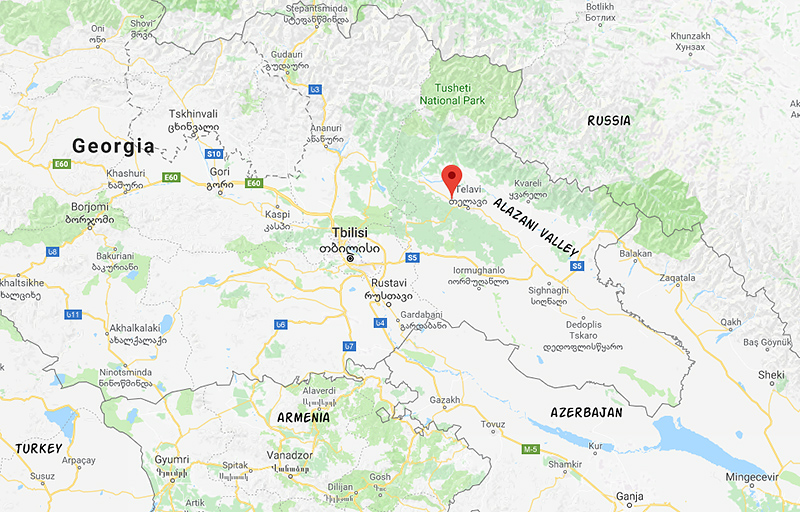Alazani Valley
The region of Kakheti in eastern Georgia is the motherland of wine, and wine is deeply ingrained into the local culture. Georgians have been making wine here for more than 8000 years. We traveled to Kakheti to find out more.
Georgians have an ancient method of making wine involving qvevri (remember that word for your next scrabble game!) Qvevri are clay vessels similar to ancient Greek amphorae. Grapes are crushed and put into the qvevri vessels, including the grape skins, stems, and seeds. The qvevri are sealed with a lid, and natural yeasts on the grape skins ferment the wine.
From our base in Telavi we toured the Alazani Valley and vicinity. One of our first stops was the Ikalto Monastery. It dates from the 8th and 9th centuries. The beloved Georgian poet Shona Rustaveli studied here in the late 12th century.
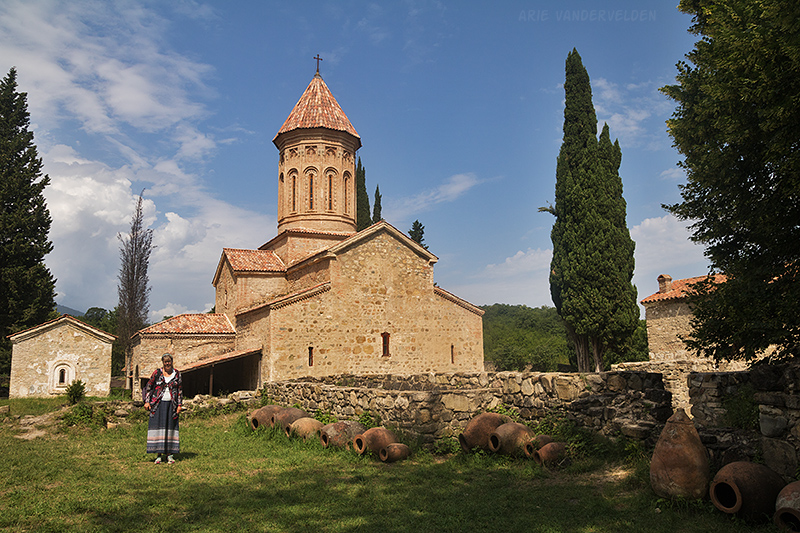
It is said that the Orthodox monks used to keep jugs of wine under their desks in case they needed some inspiration.

The qvevri are buried into the ground to keep the wine must at a constant temperature.
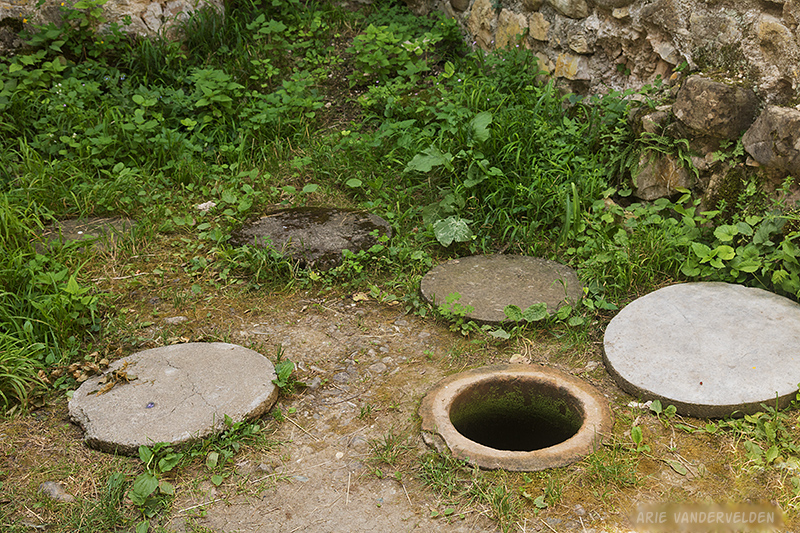
When the wine is ready it is siphoned off, leaving the skins and sediment in the bottom of the qvevri. The result is an amber-colored wine, with characteristics very different from regular white or red wine. As the wine is consumed, the remaining wine is stored in progressively smaller vessels to prevent spoilage by the air. The fermented skins are distilled into a potent drink called chacha, which is similar to Greek raki and Italian grappa. More about chacha later.
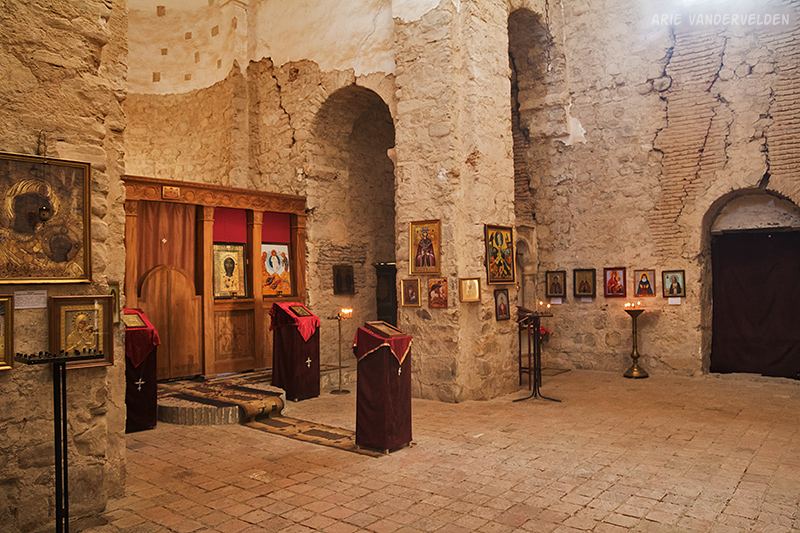
Our next stop was the Nekresi Monastery, also founded in the 8th and 9th centuries. Nekresi is on a hillside above the Alazani Valley. The steep road heading up to the monastery is blocked, and so we hiked up. Along the way were some nice views of the fertile Alazani Valley.
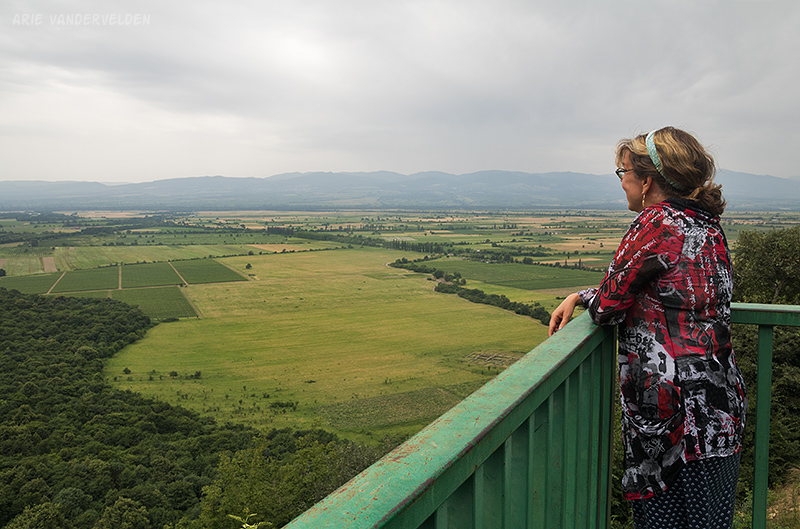
One of the buildings in the monastery had a wine-making area.
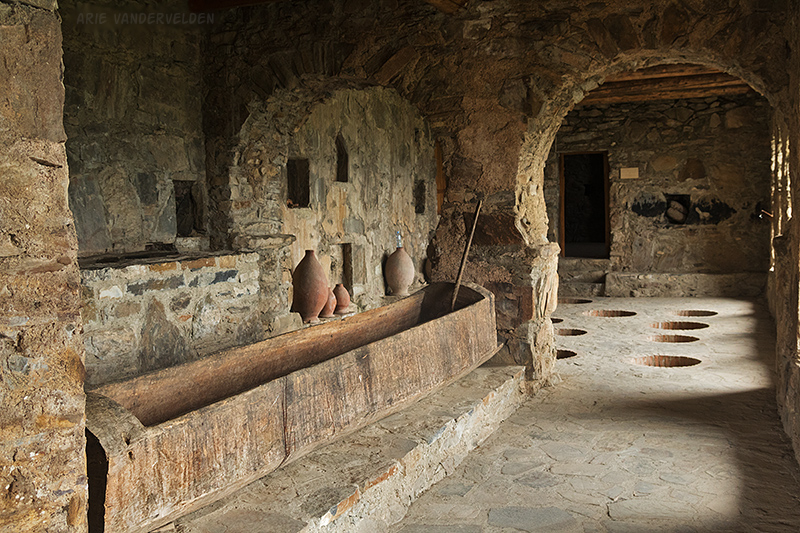
There was a room for crushing the grapes, and a room with buried qvevri.
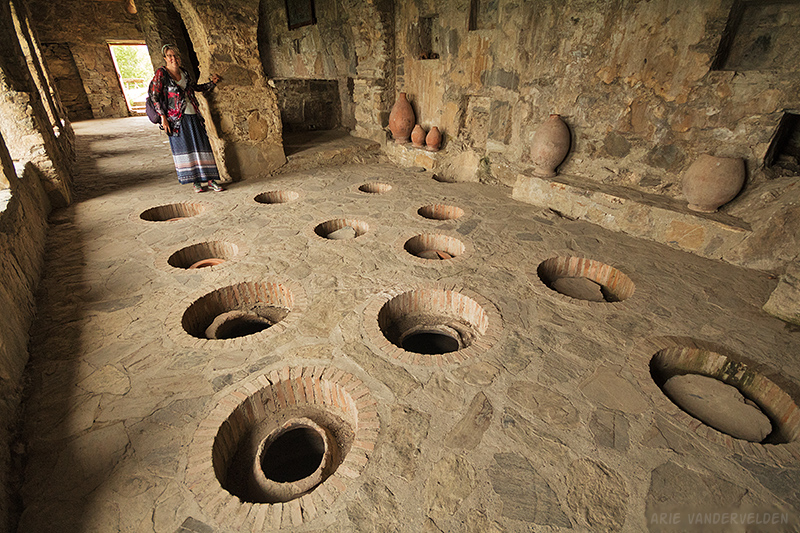
We liked Nekresi. Stern-looking monks in black robes and with black beards were scuttling around the grounds. It was an atmospheric and peaceful place.
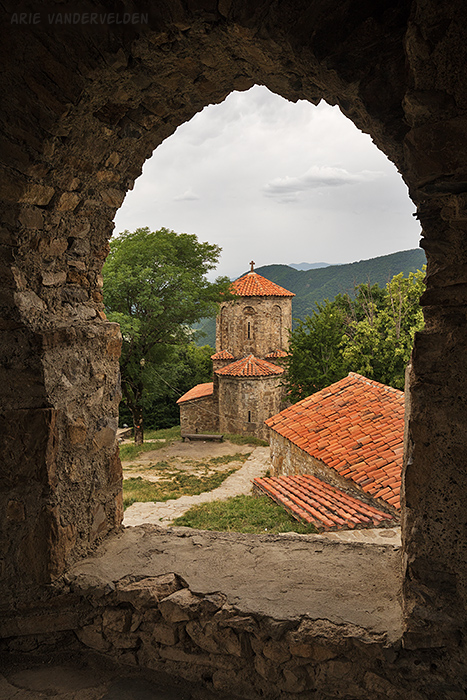
We toured the Chavchavadze estate. The estate is named after the aristocratic Chavchavadze family who lived here in the 19th century. On the estate there is a mansion, formal gardens, and there is a winery.
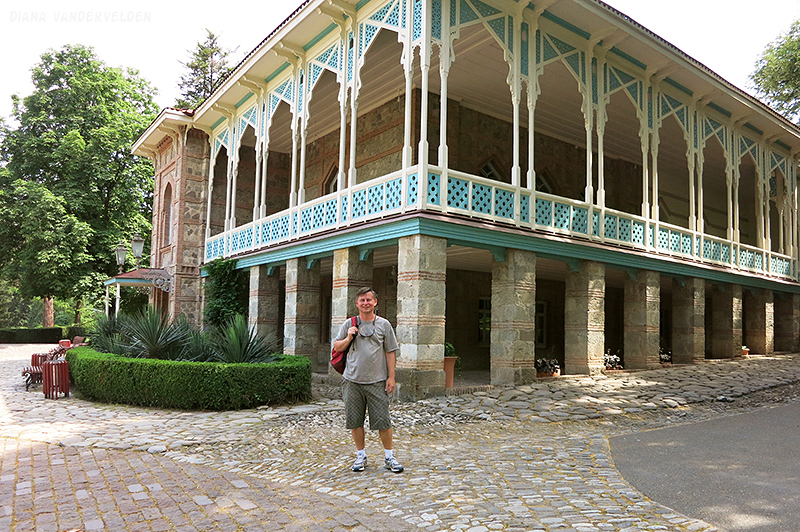
Having drunk a lot of qvevri wine recently, we decided to sample some white wine in the tasting room.

Like most tourists who visit this region, we ended up at Khareba winery. It’s inside a maze of tunnels dug by the Soviets to store ammunition. The Georgians have filled its miles and miles of passageways with bottles and barrels of wine.
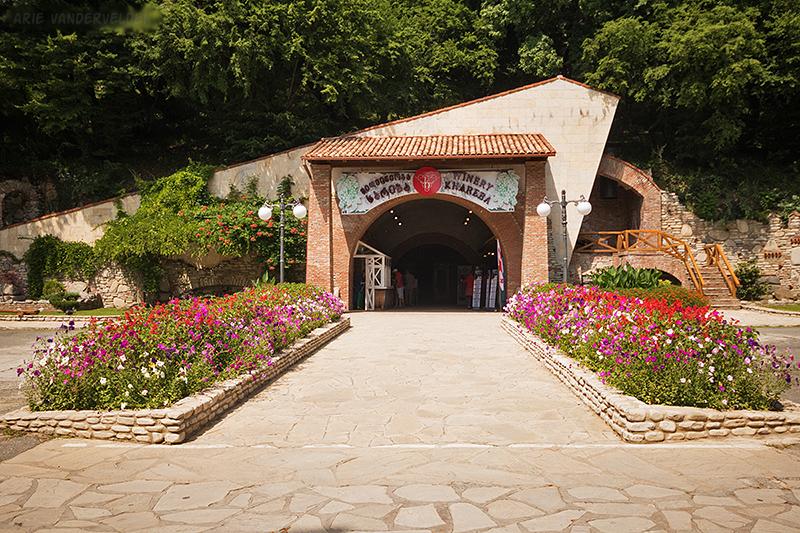
It’s comforting to know that in case of nuclear attack the wine is going to be safe… But seriously now. It’s the constant temperature inside of the tunnels that’s ideal for aging and storing wine.

In the tasting room we tried some European-style wines.

Telavi
Telavi is the main town in the Khaketi region, the main wine-growing region of Georgia. It’s a medium-sized town of about 25000-30000 people, and it has a relaxed feel about it. There is a nice public park where families come and stroll around sunset, The town is built on a hillside, and looks out over the lush and fertile Alaverdi valley, and on the other side of the valley are the Caucasus Mountains.
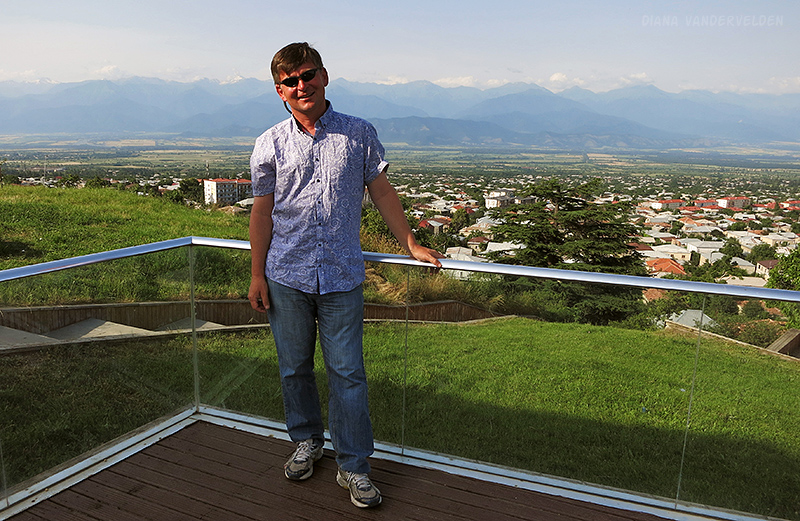
We had dinner at a restaurant with a view of the valley and mountains. The restaurant sits in the shade of a huge old plane tree that is said to be 900 years old, and is much loved by the locals. We enjoyed the nice relaxed atmosphere and the food was good.

We stayed at Neli and Zaal guesthouse. It was an absolutely wonderful place. Before traveling to Georgia we had heard about Georgians’ exceptional hospitality, and here is where we found it. We have traveled extensively over the years, and I can tell you that hospitality like this is rare. We had planned to stay for two nights, and ended up staying three. We’ll always remember our stay with Zaal and Neli.
Zaal had invited us in for a glass of wine after dinner to meet his wife Neli. Neli is an endocrinologist, and also the director of the local health services board. She is a very busy lady. Zaal is a building engineer who for years worked in Moscow, directing a team of staff. He is retired now, and runs the guesthouse (really a B&B with three rooms) with the help of a housekeeper. He is a very proud man. He has a plot of land in the valley where he grows grapes, and he makes his own Georgian-style wine.
We really enjoyed our conversation with Neli and Zaal. They are intellectuals, very well read, and their English is quite good, even though it is their third language (after Georgian and Russian). As the night went on, Zaal pulled out his bottle of chacha and poured us a round of shots. I poured it down the hatch and complemented him on the quality of his chacha. Well this just added fuel to the fire – Zaal is very proud of his chacha. So, more shots were poured, and then some more.
We were pretty sloshed already when the other guests showed up – three American college kids. They wanted to try some chacha too, so more shots were poured. It is a Georgian tradition to go around the table to make toasts, which we did. It is also a Georgian tradition to never refuse a drink when it is offered to you – refusal is considered very rude. So, more shots down the hatch. Another Georgian tradition is to always have an odd number of shots, so at the end of the toasting there was one more to go. By now things were starting to spin.
One final tradition, one that is common to most eastern-block countries, is to be able to hold your liquor, and not to display drunken behaviour. I tried to keep it together, but I don’t think I was quite walking in a straight line when we finally went upstairs at 1:30 in the morning to go to our room. I drank some water, laid down on the bed, and rode the roller-coaster. I haven’t done drinking like this for years, and I vowed not to do so again for years to come.
Well, that vow didn’t last very long. The next evening we were the only guests in the guesthouse, and Neli had left for a conference in Tbilisi. Zaal offered to have the housekeeper cook us dinner. Zaal joined us, and we talked about world politics. I can tell he gets frustrated with his English. But he’s very good at it considering he’s self-taught. Zaal promised to only pour three shots of chacha, but we ended up drinking five. Plus Georgian-style wine of course. So, blasted again for a second night, but not nearly as bad as the night before.

After a third night of drinking we said our good-byes. Zaal gave us a bottle of his qvevri wine and a bottle of his chacha. We bought the qvevri wine back to Canada and had it on new year’s eve. The bottle of chacha I brought to Italy and gave it to my friend Mario. Mario was keen to try the Georgian version of grappa. Mario had just received 15 Liters of homemade Italian grappa himself, so he was keen to do a side-by-side comparison. Mario’s eyes sure lit up when he had his first sip. He was impressed. Soon, more people from the village showed up, each having a shot, and lots of nods and looks of approval. After a few shots, Mario seemed to loosen up, and we had a fun night talking and drinking. I think I was catching more and more Italian with each shot, and Mario’s limited English seemed to improve as well. It was a fun night.
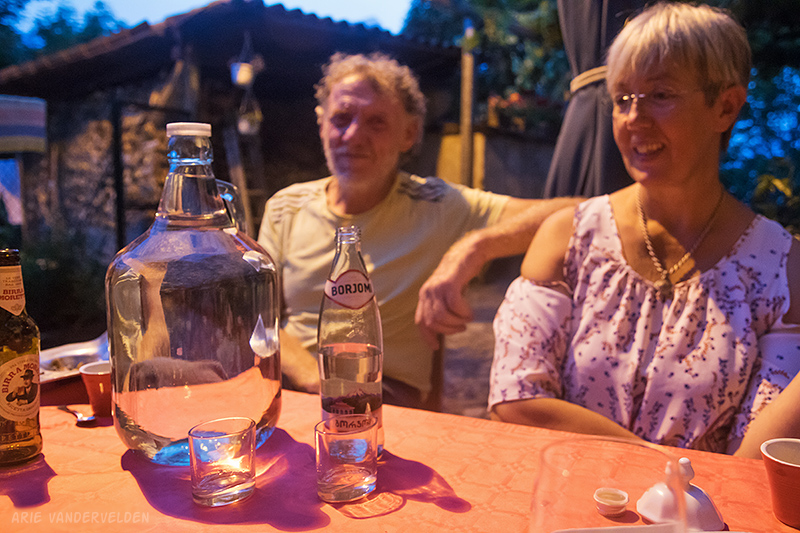
Kakheti is in eastern Georgia.
